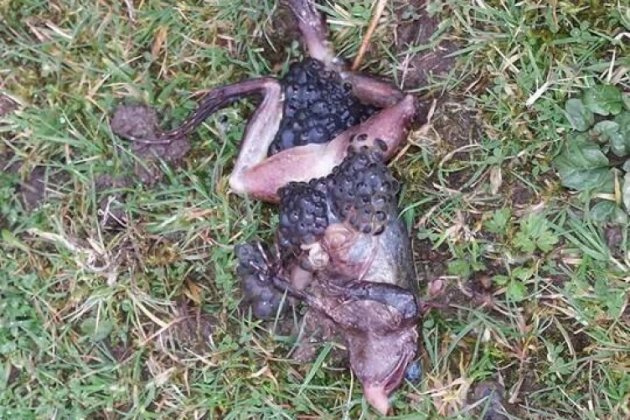Earth Watch Report - Biological Hazards

| Biological Hazard | Ireland | Co Kildare, [Curragh area] |
RSOE EDIS
| Description | |
| Hundreds of dead frogs have been reportedly found in a lake in the Curragh (County Kildare, Leinster Province). Water samples were collected yesterday - 25 Feb 2014 - after an estimated 250 to 300 dead or dying frogs were found in the area, writes Paula Campbell. An overnight analysis of the water sampled by the Herpetological Society of Ireland returned results that are within the normal range for a healthy habitat however. The primary clinical signs of the frogs discovered were dry, crackly skin around the neck area. There was also red discolouration in the skin of some of the frogs, known as common frogs, in what has been described as a 'mass die off' of the frogs in the lake. There are a number of possible causes of this huge frog die-off including being a target for rats during the spawning seasons as they become an easy target because they are worn out after all the frog reproduction. The Ranavirus, which causes internal haemorrhaging could also be a cause, alongside chytrid, a pathogenic water fungus which invades the immune system, giving the animals a crusty appearance. Skin swabs have been taken for DNA analysis in an effort to identify the root cause of this mass mortality occurrence. | |
| Biohazard name: | Mass. Die-off (frogs) |
| Biohazard level: | 2/4 Medium |
| Biohazard desc.: | Bacteria and viruses that cause only mild disease to humans, or are difficult to contract via aerosol in a lab setting, such as hepatitis A, B, and C, influenza A, Lyme disease, salmonella, mumps, measles, scrapie, dengue fever, and HIV. "Routine diagnostic work with clinical specimens can be done safely at Biosafety Level 2, using Biosafety Level 2 practices and procedures. Research work (including co-cultivation, virus replication studies, or manipulations involving concentrated virus) can be done in a BSL-2 (P2) facility, using BSL-3 practices and procedures. Virus production activities, including virus concentrations, require a BSL-3 (P3) facility and use of BSL-3 practices and procedures", see Recommended Biosafety Levels for Infectious Agents. |
| Symptoms: | |
| Status: | confirmed |
Leinster Leader
Mass die off of Frogs in the Curragh

Water samples were collected yesterday after an estimated 250 to 300 dead or dying frogs were found in the area writes Paula Campbell.
An overnight analysis of the water sampled by the Herpetological Society of Ireland returned results that are within the normal range for a healthy habitat however.
The primary symptoms of the frogs discovered were dry, crackly skin around the neck area. There was also red discolouration in the skin of some of the frogs, known as common frogs, in what has been described as a ‘mass die off’ of the frogs in the lake.
Read More Here
.....
By Michelle Hennessy | TheJournal.ie – Tue, Feb 25, 2014

View PhotoTheJournal.ie - Mystery in Kildare after discovery of 250 dead frogs
The Herpetological Society of Ireland collected samples from the frogs and the water this morning to send for analysis after obtaining an emergency licence from the National Parks and Wildlife Service (NPWS) last night. There were between 250 and 300 dead frogs discovered.
Speaking to TheJournal.ie today, Rob Gandola, a member of the society, said there are a number of possible causes of this huge frog die-off:
- Predators.
Sometimes frogs are targeted during spawning season by animals such as
rats because they are a bit distracted by the task in hand and are then
easy targets because the are worn out after all the frog love-making.
- The Ranavirus, which causes internal haemorrhaging. Gandola said it is “particularly nasty” to amphibians and can be difficult to detect.
- Chytrid, a pathogenic water fungus which invades the immune system, giving the animals a crusty appearance.
Read More Here
.....





No comments:
Post a Comment
Hello and thank you for visiting my blog. Please share your thoughts and leave a comment :)